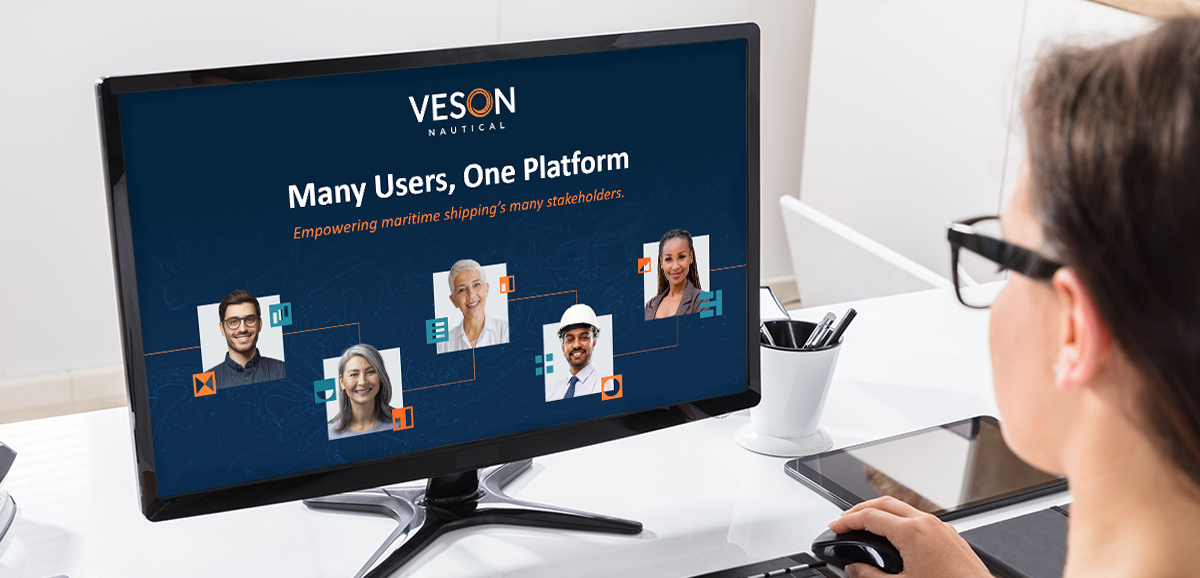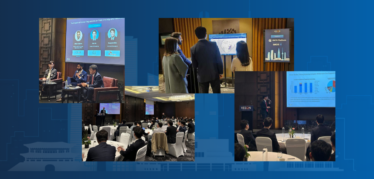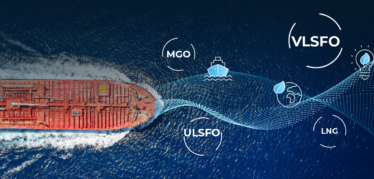There are 90,000 ships moving cargo around the world, representing a collective capacity of roughly 2,000,000 thousand DWTs. Nearly as striking as their tonnage is the number of professionals they represent: 1,545,000 people in the global maritime workforce. The movement of marine voyages and cargoes is a complex function that relies upon the participation of many diverse stakeholders, each with its own distinct set of responsibilities.
To explore the workflows, pain points, and commercial solution requirements for users on both sides of the marine contract, we recently hosted an insightful webinar, “Many Users, One Platform.” We encourage you to view the webinar on-demand at your convenience. In the meantime, here are some key takeaways.
1. Every Voyage Involves a Diverse Roster of Stakeholders
While companies within the maritime industry employ stakeholders comprising a multitude of different roles, the Many Users, One Platform webinar focused on examining eight primary roles that engage in every voyage. These roles may represent inverse goals depending upon their respective sides of the marine contract: maximizing voyage profit and minimizing voyage costs.
On the owner-operator side of the marine contract, we examine the Charterer, the Operator, the Freight Trader, and the Voyage Accounting Professional. These stakeholders are responsible for different aspects of the voyage, but all are focused on maximizing profit from the sale of freight. To read a little bit more about these users, make sure to check out this blog post.
On the tonnage charterer side of the contract, we examine the Production Planner, the Marine Logistics Professional, the Berth Operator, and the VP of Supply Chain. While these stakeholders also deal with a diverse set of day-to-day responsibilities, all of them are focused on minimizing the costs associated with the shipment of commodities (which represent a significant portion of supply chain costs). To get to know these users better, we authored a second blog post you might find helpful.
2. Every Stakeholder Has Unique Requirements for a Commercial Solution
In order to understand the technological requirements each of these stakeholders has for a commercial solution, we must start by examining their pain points, which vary significantly on a role-by-role basis. For example, while the Operator struggles daily with an overwhelming inflow/outflow of voyage information, the Berth Operator often struggles with a lack of timely insight into voyage ETAs and activities at the berth.
It is only after examining these pain points that we can surface solution requirements. For example, the Operator’s information overload can be simplified through standardized voyage reporting forms, automatic voyage updates, and centralized tasks and alerts. The Berth Operator’s lack of visibility can be transformed through integrated ETAs and a ‘Live’ view of berth activity.
Another critical facet of the solution requirements is integration. Just as these stakeholders face different pain points, they also rely upon different integrations. Using our prior example, Operators may rely upon integrated weather feeds, fuel indices, and sanctions lists, and Berth Operators may require bidirectional interfaces with transportation management systems.
3. While Diverse, These Stakeholders Also Share a Lot in Common
Although solution requirements may vary significantly amongst stakeholders, even between functions within the same organization, it is important to remember that these stakeholders also share a lot in common. In fact, their diverse requirements are rooted in similar needs, including:
- Secure and reliable access to key information and tools
- Workflow automation to alleviate the burden of manual entry
- Better coordination and communication
- Standardized data and decision support
- Complete continuity across systems
The right commercial platform has the power to build upon these commonalities, making each stakeholder’s life easier by delivering rich access, automation, coordination, standardization, and continuity. At the same time, the ideal commercial platform should couple these universal benefits with a suite of tailored capabilities and workspaces that each individual user can leverage to perform their respective workflows more efficiently and effectively. That is the future of maritime commerce.
Empower Your Many Users with the Veson IMOS Platform
As a dynamic platform for the commercial management of marine fleets and cargoes, the Veson IMOS Platform (VIP) empowers the maritime world’s diverse stakeholders with the information and tools they need to make the right decisions at the right time. VIP pairs proven business logic with an agile, cloud-based architecture that supports the global accessibility, advanced data sharing, and seamless integration required by today’s enterprises on both sides of the marine contract. To learn more about how VIP can serve your many users’ diverse needs, we invite you to view the full webinar recording here.



 Giftson Eliyesar
Giftson Eliyesar
 Hongbeom Park
Hongbeom Park
 Oliver Kirkham
Oliver Kirkham